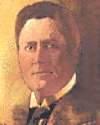
On 30 Sep 1861, William Wrigley, Jr. was born, the American manufacturer whose advertising campaigns made Wrigley's Chewing Gum internationally known. From humble origins, he turned his company into a multi-million dollar business.
You can read about his commitment to advertising for making his company successful in this magazine article, Make a Good Product for a Fair Price – Then Tell the World, from Illustrated World (1922).

On 30 Sep 1772, James Brindley died. He essentially invented the canal in Britain when he was commissioned by the Duke of Bridgwater to construct the Bridgwater Canal. Completed in 1765, it was the first English canal of major economic importance, providing a more efficient way to move coal from the Duke's Worsley mine 16-km (10-mile) to the textile manufacturing centre at Manchester. Today's book pick is: James Brindley, by Corble who is a canal enthusiast. This is the first modern Brindley biography, and describes how Brindley's canal-building work made such an important contribution to the Industrial Revolution that he deserves recognition along with Stephenson and Brunel.
It is available from Amazon, typically about New from $20.59. Used from $16.48. (As of earlier time of writing - subject to change.)
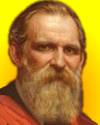 | Nothing perhaps has so retarded the reception of the higher conclusions of Geology among men in general, as ... [the] instinctive parsimony of the human mind in matters where time is concerned. |
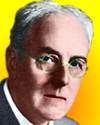 | Big whorls have little whorls Which feed on their velocity And little whorls have lesser whorls, And so on to viscosity. [Concerning atmospheric turbulence.] |
 | In considering God's power, we must not look for a God of the Gaps, a god who is called in for those phenomena for which there is yet no scientific explanation. |
| Before you look at today's web page, see if you can answer some of these questions about the events that happened on this day. Some of the names are very familiar. Others will likely stump you. Tickle your curiosity with these questions, then check your answers on today's web page. | |
| Births | |
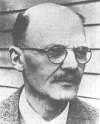 | A German physicist, born 30 Sep 1882, introduced the first successful detector of individual alpha particles and other ionizing radiations. He used it in experiments that led to the identification of the alpha particle as the nucleus of the helium atom and to Rutherford's determination (1912) that the nucleus of an occupies a very small volume at the centre. Can you name this man? |
 | Jean-Baptiste Perrin, born 30 Sep 1870, was a French physicist who, in his studies of the Brownian motion of minute particles suspended in liquids, verified Albert Einstein's explanation of this phenomenon and thereby confirmed the atomic nature of matter. He was able to determine by a new method, one of the most important physical constants, for which achievement he was honoured with the Nobel Prize for Physics in 1926. Can you name the constant he determined? |
| Deaths | |
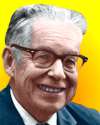 | A seismologist (1900-1985) devised a way to describe earthquake intensity which he developed with his colleague, Beno Gutenberg, in the early 1930's. The method assigns numerical ratings to the energy released by earthquakes. Can you name this scientist? |
| Events | |
 | On 30 Sep 1982, two men completed the first circumnavigation of the world in a helicopter, the Spirit of Texas. Their journey began 29 days, 3 hours, and 8 minutes earlier on September 1. One of the aviators was Jay Colburn. Who was the other aviator? |
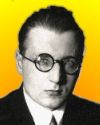 | On 30 Sep 1929, German auto maker Fritz von Opel made the first manned flight with a new form of power. He flew his Sander RAK 1 craft on a successful flight of 75 seconds, covering almost 2 miles near Frankfurt-am-Main, Germany. What powered his aircraft? |
 | On 30 Sep 1882, the world's first hydroelectric power plant in the U.S. was opened. Powered by a water wheel, a single dynamo provided 12.5 kilowatts enough for 180 lights, of ten candlepower each. A local paper manufacturer, H.F. Rogers, had been inspired by Thomas Edison's plans for an electricity production station in New York. In which U.S. state was this first hydroelectric power plant established? |
Fast answers for the previous newsletter for September 29: Gossamer Condor • Italian • diesel internal-combustion engine • talc and diamond • Thomas A. Edison • CERN, Geneva, Switzerland.
 If you enjoy this newsletter, the website, or wish to offer encouragement or ideas, please send feedback by using your mail reader Reply button.
If you enjoy this newsletter, the website, or wish to offer encouragement or ideas, please send feedback by using your mail reader Reply button. Your click on a Facebook, StumbleUpon, or other social button on the site webpages is also a welcome sign of appreciation. Thank you for using them.
© This newsletter is copyright 2020 by todayinsci.com. Please respect the Webmaster's wishes and do not put copies online of the Newsletter — or any Today in Science History webpage. (If you already have done so, please remove them. Thank you.) Offline use in education is encouraged such as a printout on a bulletin board, or projected for classroom viewing. Online, descriptive links to our pages are welcomed, as these will provide a reader with the most recent revisions, additions and/or corrections of a webpage. For any other copyright questions, please contact the Webmaster by using your mail reader Reply button.
--
If you do not want to receive any more newsletters, Unsubscribe
To update your preferences and to unsubscribe visit this link
Executive Real Estate Business Class
-
"It was like a man with wings. It wasn't like anything you'd see on TV or in a monster movie." ...
About the publisher
Search This Blog
Blog Archive
-
▼
2020
(1542)
-
▼
September
(173)
- SCIENCE: Just how big is Everest?
- The Latest News from History News Network
- On This Day for September 30 - Munich Agreement si...
- We are called to return to our foundational values...
- Newsletter for Wednesday 30 September.
- They Killed His Wife And Left Him For Dead – Then ...
- TRAVEL: Telling new truths about America’s histori...
- Make learning fun with Nat Geo Kids magazine! Subs...
- On This Day for September 29 - British mandate in ...
- Newsletter for Tuesday 29 September.
- Special Edition: Dinosaurs come to life like never...
- September 29: On This Day in History
- HISTORY: America's most endangered historic sites
- New This Week on History News Network
- On This Day for September 28 - California “discove...
- Newsletter for Monday 28 September.
- September 28: On This Day in History
- FAMILY: What do I tell my kids about wildfires and...
- On This Day for September 27 - Norman Conquest beg...
- Newsletter for Sunday 27 September.
- September 27: The Rosetta Stone, E=mc² and Fear as...
- The Compass: Indonesia
- On This Day for September 26 - First televised U.S...
- Newsletter for Saturday 26 September.
- September 26: Frances Drake's Circumnavigation, th...
- CORONAVIRUS UPDATE: Is this the end of the office?
- PHOTOGRAPHY: They feed us. Now we see them.
- The assassination of Lord Mountbatten | Enola Holm...
- 39,500-Year-Old Cave Bear Discovered Perfectly Pre...
- On This Day for September 25 - Pacific Ocean sight...
- The Roundup Top Ten for September 25, 2020
- Newsletter for Friday 25 September.
- September 25: Battle of Stamford Bridge, Remote Co...
- ANIMALS: These mighty elephants find peace
- On This Day for September 24 - Federal troops sent...
- Newsletter for Thursday 24 September.
- Global cartels taking control of the world + HPA B...
- September 24: Decline of the Byzantine Empire, Ope...
- YOUR WEEKLY ESCAPE: America's oldest mystery
- SCIENCE: How to cope with a big death toll
- The Latest News from History News Network
- On This Day for September 23 - Neptune observed, J...
- Newsletter for Wednesday 23 September.
- September 23: Nintendo, the Start of Data Processi...
- TRAVEL: How will America’s state parks survive?
- Matching gift opportunity for Sumatran rhinos
- On This Day for September 22 - Solidarity formed, ...
- Newsletter for Tuesday 22 September.
- September 22: Salem Witch Trials, Iraq's Invasion ...
- HISTORY: Who can replace RBG?
- Feed their curiosity! Get Nat Geo Kids magazine fo...
- New This Week on History News Network
- On This Day for September 21 - Joseph Smith's visi...
- Newsletter for Monday 21 September.
- September 21: France, China and a Sheep Shearing R...
- FAMILY: Don’t tell your kids outdated stuff about ...
- On This Day for September 20 - Rome incorporated i...
- Pro-life is not Politics + Vickie Travis's message...
- Newsletter for Sunday 20 September.
- September 20: Attila the Hun, Magellan's Circumnav...
- The Compass: Chile
- Matching gift opportunity for Sumatran rhinos
- On This Day for September 19 - George Washington's...
- Newsletter for Saturday 19 September.
- CORONAVIRUS UPDATE: Young people are spreading the...
- September 19: 1st Country to Grant Women the Right...
- PHOTOGRAPHY: How to make dinos look new (CORRECTED)
- Quick Note: How to Save Videos by Downloading
- PHOTOGRAPHY: How to make dinos look new
- The Mayflower | Medieval spiders | Ancient Egypt f...
- When She Found Out Her Boyfriend Was A Serial Kill...
- The Roundup Top Ten from History News Network
- On This Day for September 18 - Mukden seized by Ja...
- Newsletter for Friday 18 September.
- "Truth Crushes Evil" + We're Winding down + What ...
- YOUR WEEKLY ESCAPE: The country that doesn't exist
- September 18: Great Fire of Moscow, the CIA and El...
- ANIMALS: How U.S. officials stopped the flying squ...
- Two New Podcasts From HISTORY
- Don't miss out: back to school savings for learner...
- On This Day for September 17 - Camp David Accords ...
- Newsletter for Thursday 17 September.
- September 17: Bloodiest Day in the American Civil ...
- SCIENCE: He found part of a one-of-a-kind dinosaur
- SPECIAL REPORT: How the West is primed to burn
- The Latest News from History News Network
- On This Day for September 16 - Mayflower's departu...
- Newsletter for Wednesday 16 September.
- September 16: French Abolish Slavery, Malaysia For...
- TRAVEL: Will slowing down help you get stronger?
- Special Report: How do we end this pandemic?
- On This Day for September 15 - Central Americans g...
- Newsletter for Tuesday 15 September.
- September 15: Darwin Reaches the Galapagos, Penici...
- HISTORY: How the U.S. battled catastrophic wildfir...
- BREAKING NEWS: Possible evidence of life found on ...
- Discover Remarkable Leaders With Nat Geo History M...
- On This Day for September 14 - Mexico City capture...
- New This Week on History News Network
- Newsletter for Monday 14 September.
-
▼
September
(173)
-
Blogroll
-
About
HistoryFact










0 comments:
Post a Comment